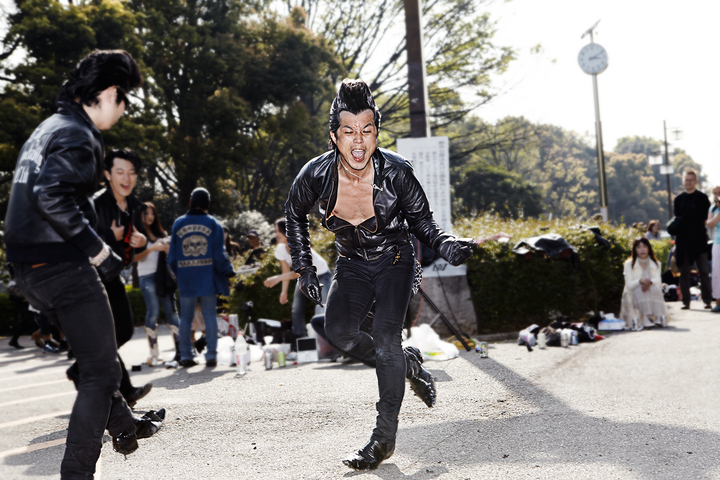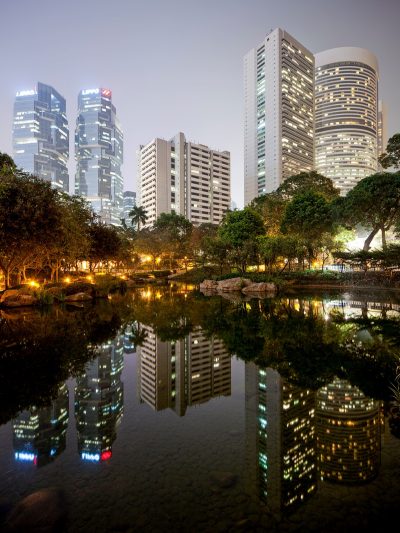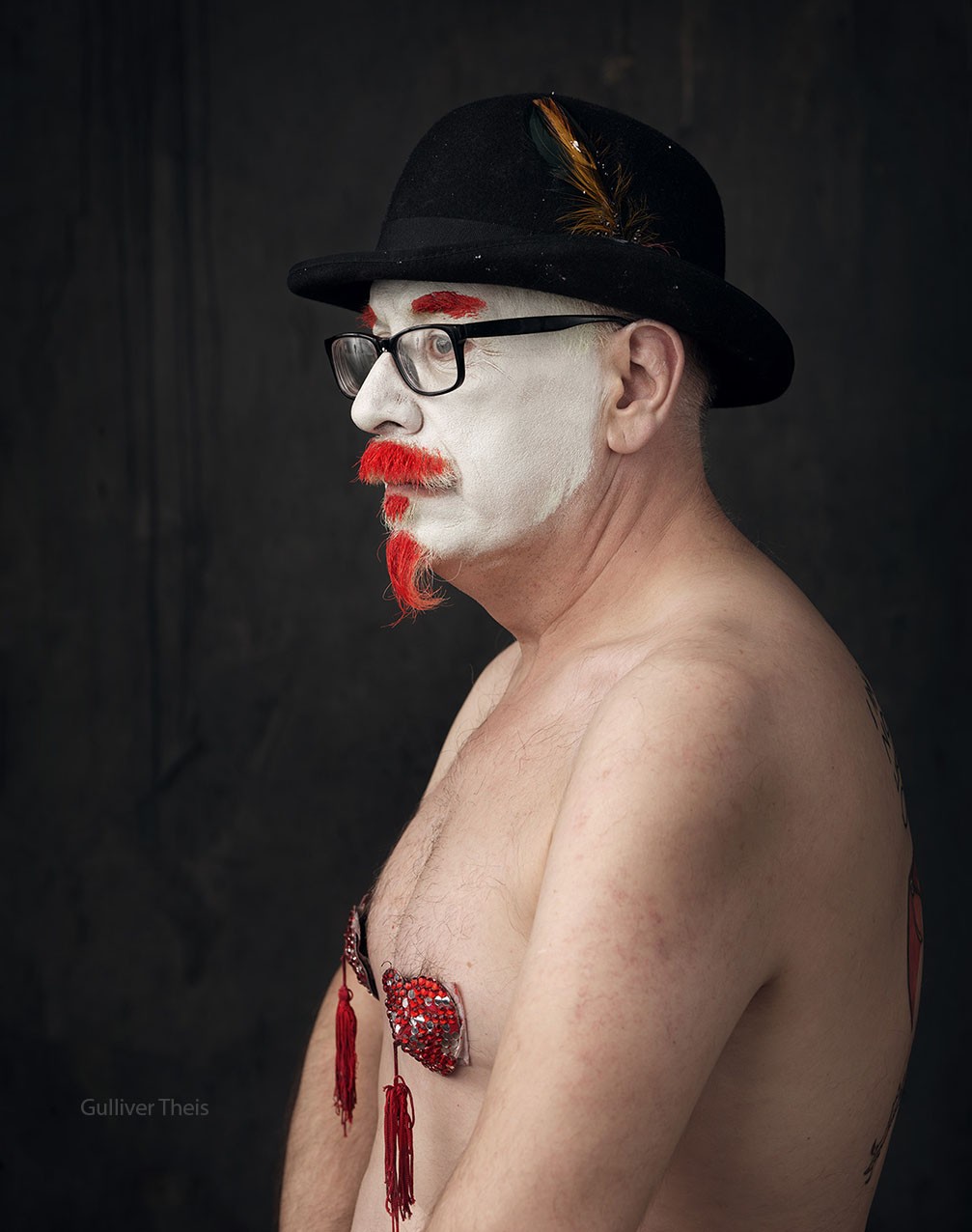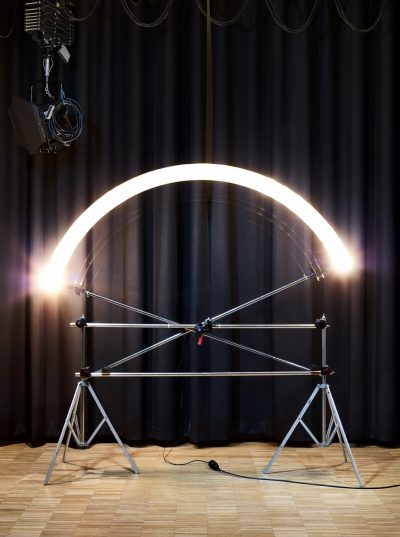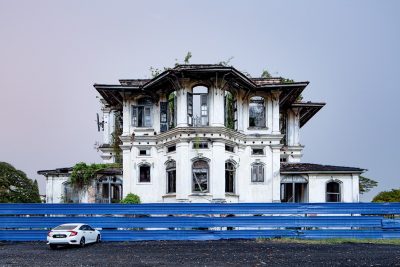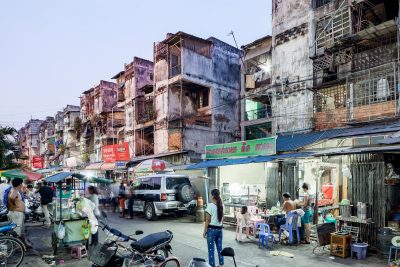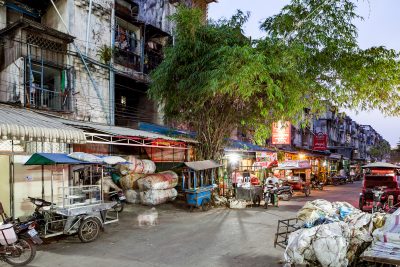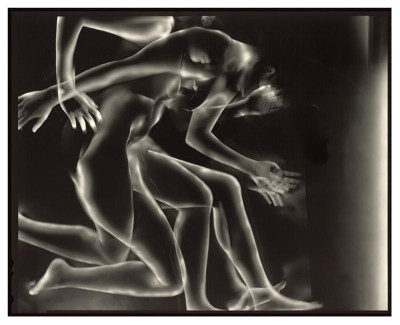Der Fotograf Paul Müller-Rode entdeckte die faszinierende Subkultur der Tokioter Rockabilly-Szene auf seiner Japanreise. Daraus entstand ein spannendes Portfolio, das Einblicke in diese Szene gibt.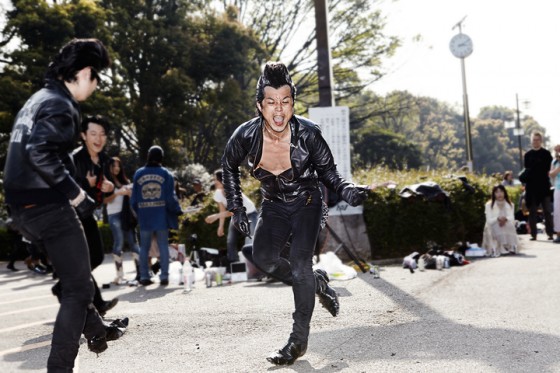
Cosplayer, Gothics, Lolitas, Mangas: Japan ist voller faszinierender Subkulturen. Der deutsche in Hamburg lebende Fotograf Paul Müller-Rode reiste 2009 nach Tokio, ursprünglich um Streetstyle zu Fotografieren. Doch im Yoyogi Park in der Szenemeile Harajuku entdeckte er die viel spannendere Szene: Rockabillys. So entstand ein ganz anderes Fotoprojekt. Müller-Rode nahm mit den jungen Männern Kontakt auf – und gewann ihr Vertrauen. So entstanden faszinierende Einblicke in diese Kultur.
Um den Bildband “Tokyo Rockabilly Club” in Druck zu geben, benötigt Paul Müller-Rode noch Subskribenten. Zu dem Buchprojekt gibt es auch eine eigene Facebook-Seite.de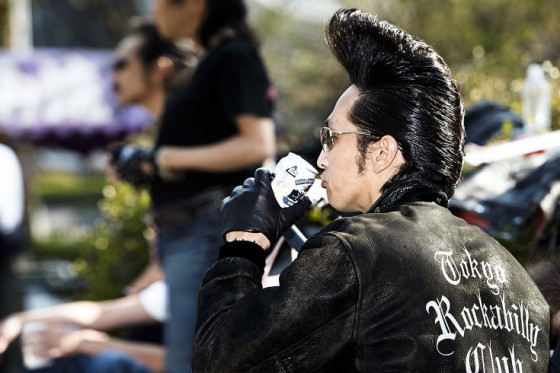

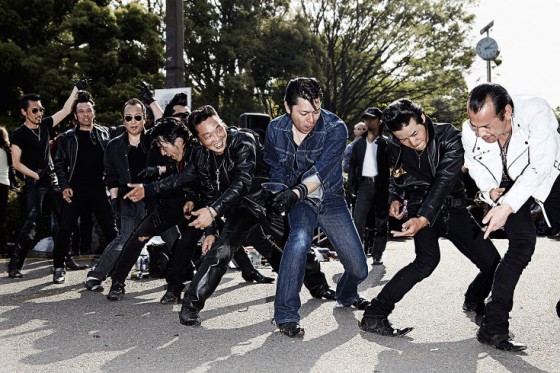
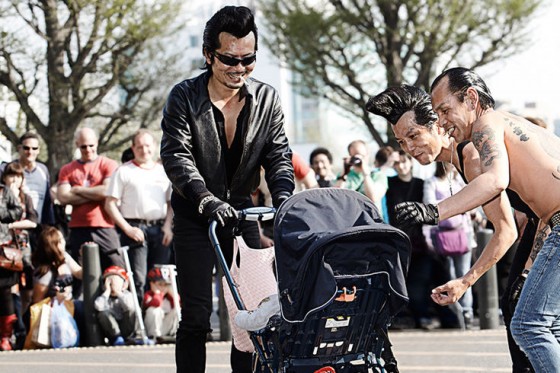
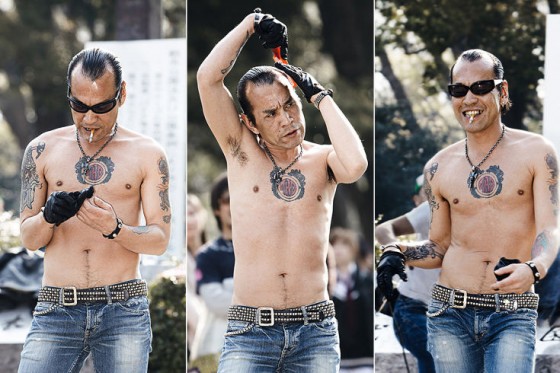
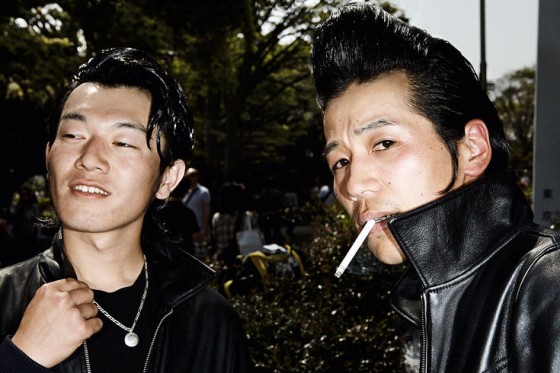
Hier die Texte aus dem Buch auf Englisch/Deutsch:
The City. The Trip. The Book.
Tokyo, home of Sony and Sushi, Geisha and Godzilla, Karate and Cherry Blossom.
Japan has given birth to many cultures and Tokyo is the epicenter of this cultural genesis. The city is a global centre of attraction and most expensive metropolis in the world, despite the fact that seismologists predict strong earthquakes almost every week.
With a population of over 8 million living in the city (over 34 million metropolitan area) a thriving subculture and a thirst for technology, this place truly is a melting pot of the bizarre cool, to the urban strange.
The streets of the city are vibrant and exciting and so too are the subcultures that inhabit them.
What may seem strange to us in the West commands respect and a high status within Japanese society. The first of their kind were, The Bamboo Shoot Kids, followed by Anime roll play such as Cosplay, Otaku and Akiba-kei. Also big on the scene were Visual kei musicians and the Gothic Lolitas.
Bleached blonde, the boys and girls of the Gyaru-oh or Gyaru chased recognition and status and became iconic symbols of Japanese youth. Whilst this group of young socialites rejoiced in social affairs the Hikkiomori cocooned themselves in their homes, cutting off almost all contact with the outside world.
For the past thirty years, one group has stood firm and still remains as strong, if not stronger: The Tokyo Rockabillys. This book is dedicated to this unusual and creative group of people. Congregating in the famous Yoyogi Park, they listen to music, dance and celebrate their extrovert way of life.
Paul Müller-Rode travelled to Tokyo.
The first idea for my trip to Japan was to shoot some streetstyle pictures: Manga people or Gothic Lolitas but in Asia, everything is much faster than in Europe. My friend Timo, who lived in Japan at this time, told me that this scene wasn‘t as extraordinary as it was a few years ago.
Nevertheless, I made my way to Yoyogi Park on a glorious Sunday afternoon. It became apparent that the Gothic and Manga girls were nothing more than a tourist attraction. But elsewhere, an ever growing crowd of Rockabillys was gathering. They played Rock ‘n’ Roll from a stereo and started to dance as if they were in a club, not in a public park in the middle of Tokyo.
Although requests to take photos were declined, I managed to capture some pictures of the group dancing. Back in my hotel I burnt them onto a DVD and copied some of them onto my iPhone. The next Sunday I grabbed the DVD, my iPhone and my huge camera backpack and returned to Harajuku. I talked to one of the guys and told him that I had taken some pictures of them and that I‘d like to shoot some more. Unfortunately he spoke little English, so I showed him the pictures on the iPhone and pointed to the DVD and presented it to him.
Now he understood: „Aahh it’s a present“ he said.
„Yes that’s it“, I thought, and “I‘d like to shoot some more“.
With his help, I made my way from one Rockabilly to the next.
Some preferred not to be photographed but with the help of my new Rockabilly friend, I finally managed to shoot this session in Yoyogi Park.
I was fascinated by these Rockabillys because every age was represented – music and style were the things that connected them: shaved receding hairlines, massively-pompadoured hair, their clothes – although new scratched across the asphalt, Gaffa-taped shoes danced to destruction. But the most striking impression they left was their enthusiasm and energy and the coolness they exuded when performing their show. As well as the undisguised pride and joy that was reflected in their smile and their unique dances. They have been doing this for 30 years, weekend after weekend, with no financial incentive in mind, just for fun, just for themselves, ignoring anyone laughing or pointing at them with incomprehension.
I was deeply impressed.
Paul Müller-Rode was born 1973 in Lindau at Lake Constance. During his early professional career, first in Wiesbaden and then Frankfurt, his skill as a photographer began taking shape. He moved to Hamburg in 2001, to work as a photographer at the Heinrich Bauer publishing house. In 2003 he was promoted to the position of Chief Photographer & Studio Manager, responsible for shooting covers and fashion editorials for magazines. At the same time, he became increasingly interested in taking portraits of musicians and subcultures. His drive to discover new experiences took him into freelancing in 2007. This freedom has enabled him to capture a wealth of eclectic, unusual and stimulating portraits from all over the world. Paul Müller-Rode now lives and works in Hamburg.
Die Stadt. Die Reise. Das Buch.
Heimat von Sony und Sushi, Geisha und Godzilla, Karate und Kirschblüte – Japan ist die Mutter vieler Kulturen und Tokio ihre Schaltzentrale.
Mit mehr als 8 Millionen Einwohnern (Großraum über 34 Millionen) ist die Stadt die Metropole in einem Ballungsraum von Metropolen. Und auch wenn man laut Seismologen hier immer wieder mit einem kleineren und demnächst wohl mit einem großen Erdbeben rechnen sollte: Tokio ist Facettenmillionär, globaler Anziehungspunkt und teuerste Stadt der Welt.
So vielgestaltig wie das Stadtbild, so zahlreich sind auch Tokios Szenen. Natürlich, exzentrische Subkulturen gibt es überall. Doch in Japan sind sie besonders ausgeprägt. Die Bamboo Shoot Kids waren mit die ersten, die ihre Performance öffentlich feierten. Dem folgten immer neue, bisweilen bizarre oder extreme Streams wie Cosplayer, Otaku und Akiba-kei der Anime-Szene oder auch Visual-Kei-Musiker und Gothic-Lolitas. Aber auch Gyaru, bzw. Gyaru-oh: Frauen und Männer mit blondierten Haaren und Hang zu Statussymbolen, die man in der westlichen Welt als Wohlstands-White-Trash ansehen würde. Dieser Art von Lifestyle-Exhibitionismus steht wiederum mit den Hikikomori ein ganz anderes soziales Phänomen gegenüber: Menschen, die sich freiwillig in ihrer Wohnung einschließen und der uferlosen Reizüberflutung zum Trotz alle Kontakte auf ein Minimum reduzieren.
Die Tokyo Rockabillys, denen dieses Buch gewidmet ist, haben sich in diesem Geflecht von Strömungen ihren ganz eigenen Platz geschaffen: den Yoyogi Park, in dem sie sich bereits seit mehr als 30 Jahren treffen, um zu tanzen, Musik zu hören und ihren Lebensstil zu feiern.
Paul Müller-Rode ist nach Tokio gereist.
Ursprünglich war ich in Japan, um Streetstyle zu fotografieren: Manga oder Gothic-Lolitas beispielsweise. Aber in Asien ticken die Uhren schneller als in Europa und von meinem Freund Timo, der zu der Zeit in Tokio lebte, erfuhr ich, dass diese Szene ihre besten Zeiten hinter sich hatte.
Dennoch ging ich sonntags zum Yoyogi Park. Tatsächlich waren Gothic-Volk und Manga-Mädchen leider kaum noch mehr als Touristenattraktionen. Doch auf dem ersten großen Platz sammelten sich immer mehr Rockabillys. Aus einer Musikanlage ertönte Rock ‘n’ Roll und sie fingen an zu tanzen, als wären sie in einem Club und nicht auf einer öffentlichen Grünfläche Tokios.
Aufforderungen, sich fotografieren zu lassen, wurden abgelehnt, aber dennoch konnte ich ein paar Tanzbilder machen. Die Bilder brannte ich im Hotel auf DVD und kopierte einige auf mein iPhone. Am nächsten Sonntag zog ich mit DVD, iPhone und prall gefülltem Fotorucksack wieder nach Harajuku. Ich sprach einen der Jungs an und versuchte zu erklären, dass ich Fotos gemacht hatte und gerne noch mehr machen möchte. Leider sprach er kaum Englisch, also erklärte ich mit Händen und Füßen, zeigte die Bilder auf dem iPhone und schenkte ihm die DVD.
Das Eis war gebrochen: “Aahhh, it’s a present”, sagte er.
Und ich dachte: “Ja genau.” Und: “Ich will Fotos machen.”
So sprach ich einen nach dem anderen an und er half mir dabei. Ich holte mir ein paar Abfuhren, aber dank meines neuen Rockabilly-Freundes konnte ich im Yoyogi Park diese Bildreihen schießen.
Ich war schlicht fasziniert von den Rockabillys. Das lag zum einen daran, dass alle Altersschichten vertreten waren – das Verbindende waren Musik und Style: reinrasierte Geheimratsecken, fette Tollen, Klamotten, die teilweise nagelneu einfach über den Asphalt geschrammt wurden, Gaffa-Klebeband, das um völlig zertanzte Schuhe gewickelt war.
Aber das Bemerkenswerteste war diese Kompromisslosigkeit, die echte Coolness, mit der sie dort auftraten. Und die unverstellte Freude, die sich in ihrem Lachen und ihren einzigartigen Tänzen zeigte. Seit 30 Jahren ziehen sie das durch – Wochenende für Wochenende, ohne finanzielle Aspekte, einfach nur so. Um ihr Ding zu machen, ohne Rücksicht auf anderer Leute Spott oder Unverständnis. Das finde ich wirklich großartig.
Paul Müller-Rode wurde 1973 in Lindau am Bodensee geboren.
Nach dem Abitur führten ihn Ausbildung und erste Berufsjahre nach Wiesbaden und Frankfurt. 2001 zog er nach Hamburg und arbeitete beim Heinrich Bauer Verlag, zunächst als Fotograf, ab 2003 als Cheffotograf und Studioleiter. Im Fokus standen hier Coverfotos und Modestrecken für Magazine. Parallel wuchs sein Interesse an Porträts von Musikern und Subkulturen.
Der Wunsch nach vielseitigeren Aufgaben brachte Paul Müller-Rode 2007 dazu, sich selbstständig zu machen. So konnte er auch bei Auslandsaufenthalten der Leidenschaft nachgehen, Menschen in ihrer Außergewöhnlichkeit in Szene zu setzen. Paul Müller-Rode lebt und arbeitet in Hamburg.
